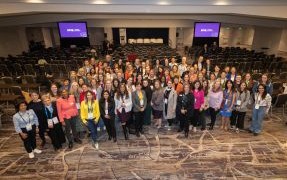SPIE Journal of Applied Remote Sensing honors best papers published in 2021
BELLINGHAM, Washington – The Journal of Applied Remote Sensing has given its first award for best student paper for research with potential application for improving crop management. The new award joins three others that recognize exceptional articles in interdisciplinary applications, theoretical innovation, and photo-optical instrumentation design published in 2021.
The journal is published online in the SPIE Digital Library by SPIE, the international society for optics and photonics, and optimizes the communication of concepts, information, and progress among the remote-sensing community. Ni-Bin Chang, professor of civil, environmental, and construction engineering at the University of Central Florida, is editor-in-chief.
Time series analysis of the enhanced vegetation index to detect coffee crop development under different irrigation systems by Pedro A. de Azevedo Silva, Marcelo de Carvalho Alves, Thelma Sáfadi, and Edson A. Pozza, all of the Federal University of Lavras, Brazil, was selected for the Best Student Paper. Their research concluded that seasonal autoregressive integrated moving average models enabled the detection of early signs of underdevelopment in coffee crop, which could help with crop management.
Passive shortwave-infrared polarimetric sensing of cloud thermodynamic phase by Martin Jan Tauc, Elizabeth M. Rehbein, Laura M. Eshelman, Wataru Nakagawa, and Joseph A. Shaw, all of Montana State University, United States, was selected for Theoretical Innovation. The paper reinforces a previous finding that polarimetry improves cloud thermodynamic phase classification and explores whether fast-moving clouds introduced polarization artifacts into the data by comparing the original polarimeter configuration with a snapshot configuration.
Floodwater detection in urban areas using Sentinel-1 and WorldDEM data by David C. Mason, Sarah L. Dance, and Hannah L. Cloke, all of the University of Reading, United Kingdom, was selected for Interdisciplinary Application. Cloke is also affiliated with Uppsala University and the Center of Natural Hazards and Disaster Science, Sweden. Their method achieved high urban flood detection accuracies on two flood events that occurred in the UK. The method has potential for operational use for detecting urban flooding in near real-time on a global basis.
Synthetic ultrawideband orbital angular momentum radar by Daniel J. Orfeo, Dylan Burns, Dryver R. Huston, and Tian Xia, all of the University of Vermont, United States, was selected for Photo-Optical Instrumentation and Design. The paper’s key results include orbital angular momentum (OAM) phase front characterization, detection of specified OAM modes, and configuration of a network analyzer ultrawideband radar with synthetic OAM mode-control via signal post-processing.
The SPIE Digital Library, the world's largest collection of optics and photonics applied research, comprises more than 560,000 publications and presentations.
About SPIE
SPIE, the international society for optics and photonics, brings engineers, scientists, students, and business professionals together to advance light-based science and technology. The Society, founded in 1955, connects and engages with our global constituency through industry-leading conferences and exhibitions; publications of conference proceedings, books, and journals in the SPIE Digital Library; and career-building opportunities. Over the past five years, SPIE has contributed more than $22 million to the international optics community through our advocacy and support, including scholarships, educational resources, travel grants, endowed gifts, and public-policy development. www.spie.org
Contact:
Daneet Steffens
Public Relations Manager
daneets@spie.org
+1 360 685 5478
@SPIEtweets



